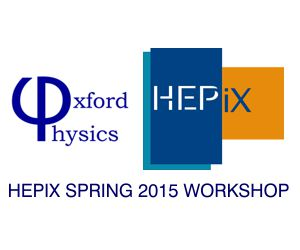Speaker
William Strecker-Kellogg
(Brookhaven National Lab)
Description
It's simple enough to instantiate a new process in an existing
environment; it can be much more challenging to foster acceptance of
such a process in IT environments and cultures that are traditionally
stagnant and resistant to change, and to maintain and optimize that
process to ensure it continues to realize optimal benefit. To enhance
our computing facility, we've already taken considerable strides toward
simplifying, optimizing, and automating our technical deployment and
maintenance procedures by analyzing, adopting, and implementing policies
and technologies. As our facility evolves, so does technology change: we
continuously revisit our environment and needs, evaluate our current
tools and processes, and watch the horizon of the IT landscape for new
and more optimal technology and solutions.
Our configuration management core relies in part upon Puppet: Puppet
Labs has developed a new server model, which we have tested and
evaluated against our existing Puppet deployment. We've developed an
automated testing process based upon Jenkins CI, a continuous
integration tool that validates pending changes before they can be
pushed into our production environment. We've begun evaluating
MCollective, an orchestration framework that may prove useful to our
current automation processes by adding functionality such as resource
grouping and reporting. We're working with other organizations at our
site that share our interest in configuration management to share ideas
and refine solutions.
In this talk, we present an overview of the current state of
configuration management environment in our facility, the technical
challenges we currently face, the technology we're evaluating and using
to address those challenges, and the direction in which we plan to steer
our future efforts.
Summary
An overview of our Puppet deployment at the RACF.
Authors
Jason Alexander Smith
(Brookhaven National Laboratory (US))
William Strecker-Kellogg
(Brookhaven National Lab)
Co-author
John Steven De Stefano Jr
(Brookhaven National Laboratory (US))
